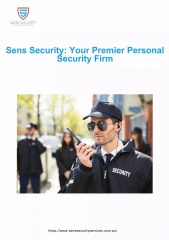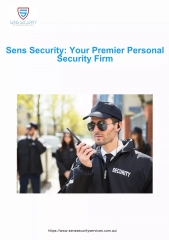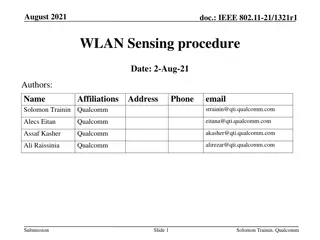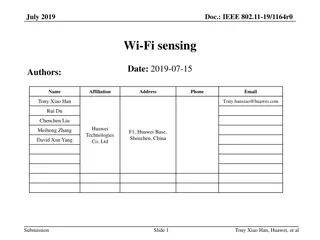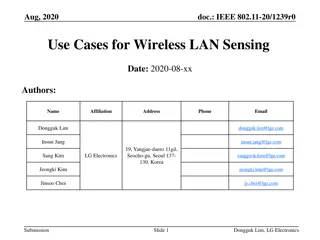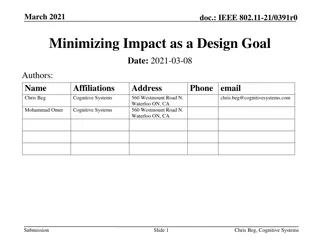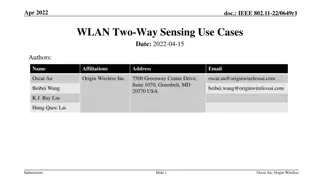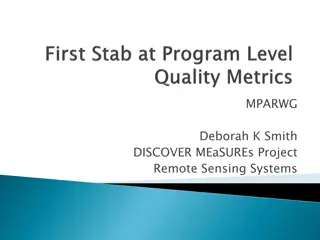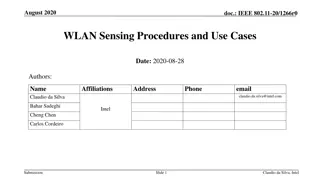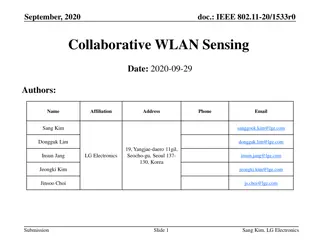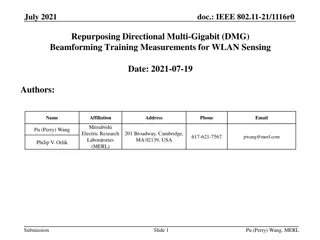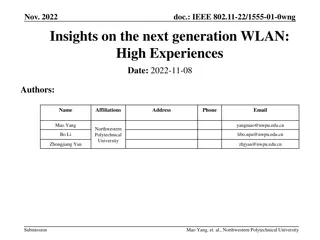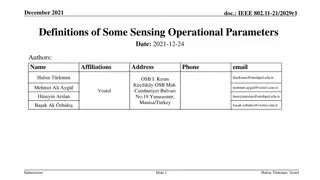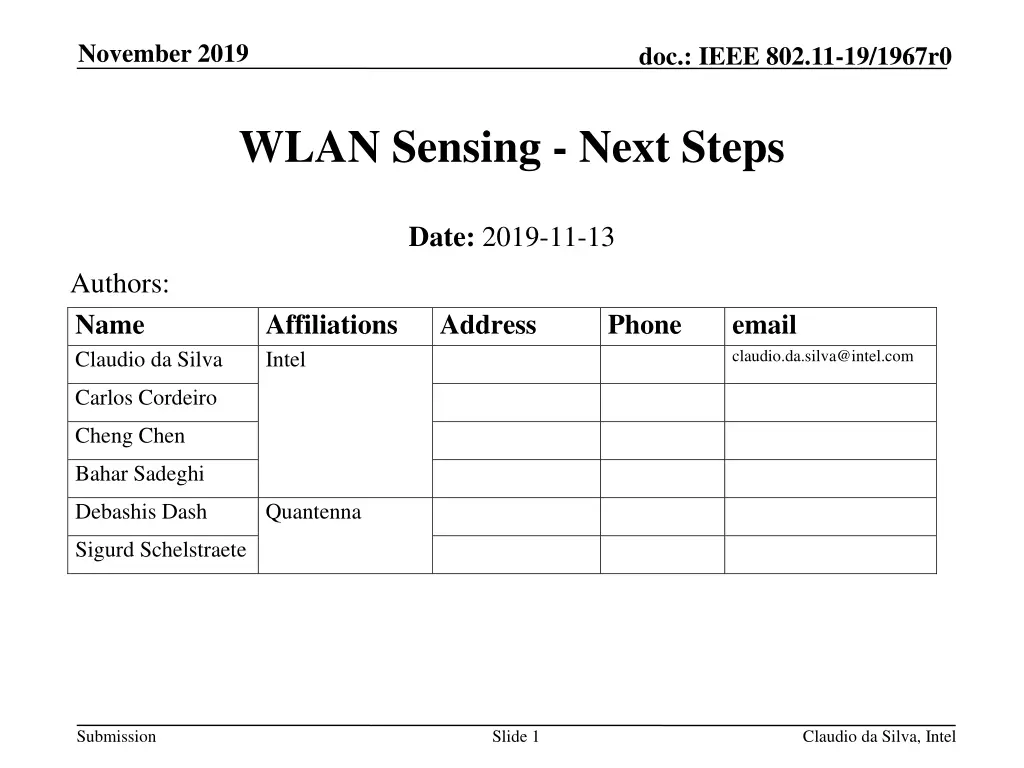
IEEE 802.11-19/1967r0 WLAN Sensing Next Steps Discussion
Explore the formation and progress of the IEEE 802.11-19/1967r0 WLAN Sensing TIG, focusing on use cases, technical approaches, and standardization for WLAN sensing, as discussed in the November 2019 session.
Download Presentation

Please find below an Image/Link to download the presentation.
The content on the website is provided AS IS for your information and personal use only. It may not be sold, licensed, or shared on other websites without obtaining consent from the author. If you encounter any issues during the download, it is possible that the publisher has removed the file from their server.
You are allowed to download the files provided on this website for personal or commercial use, subject to the condition that they are used lawfully. All files are the property of their respective owners.
The content on the website is provided AS IS for your information and personal use only. It may not be sold, licensed, or shared on other websites without obtaining consent from the author.
E N D
Presentation Transcript
November 2019 doc.: IEEE 802.11-19/1967r0 WLAN Sensing - Next Steps Date: 2019-11-13 Authors: Name Claudio da Silva Affiliations Intel Address Phone email claudio.da.silva@intel.com Carlos Cordeiro Cheng Chen Bahar Sadeghi Debashis Dash Quantenna Sigurd Schelstraete Submission Slide 1 Claudio da Silva, Intel
November 2019 doc.: IEEE 802.11-19/1967r0 Abstract The purpose of this presentation is facilitate a discussion on how to respond to the SENS TIG formation motion by proposing different next steps options for the TIG to consider. Submission Slide 2 Claudio da Silva, Intel
November 2019 doc.: IEEE 802.11-19/1967r0 SENS TIG Formation Motion Approve formation of a WLAN sensing TIG to investigate use cases, requirements, technical approaches and changes to the 802.11 standard to support WLAN sensing. The TIG is to bring a recommendation to the 802.11 WG at the November 2019 session to either a) Continue with the TIG on WLAN sensing until the next session; or b) Terminate the TIG with no further work on WLAN sensing; or c) Terminate the TIG and request formation of a SG to develop a PAR and CSD on WLAN sensing. Moved: Carlos Cordeiro Seconded: Jim Lansford Result: 123/0/8 Submission Slide 3 Claudio da Silva, Intel
November 2019 doc.: IEEE 802.11-19/1967r0 SENS TIG: Scope of Work As defined in Proposed TIG on WLAN sensing (19/1654r0), the scope of SENS TIG is to: Discuss contributions in the areas of, but not limited to: Use cases and requirements Key performance indicators Channel models Technical approaches and 802.11 standard gaps in the areas such as protocol for coordination across 802.11 STAs, support of different frequency bands, measurement and reporting, etc. Alternative solutions Submission Slide 4 Claudio da Silva, Intel
November 2019 doc.: IEEE 802.11-19/1967r0 SENS TIG Since the creation of SENS TIG, Two conference calls were held in October Total of 6 presentations, ~40 people in each call Three sessions held this week during the plenary meeting Total of 9 technical presentations, room at/over capacity Strong levels of participation and engagement. Presentations made to the TIG covered (a) Use cases, (b) Market potential analysis, (c) Technical feasibility, (d) Performance metrics and requirements, (e) Alternative solutions, and (f) Standard gaps. Virtually all areas identified in the TIG s scope of work were discussed. Submission Slide 5 Claudio da Silva, Intel
November 2019 doc.: IEEE 802.11-19/1967r0 SENS TIG: Presentations 1/2 Rui Du (Huawei), Usage models for WLAN sensing Meihong Zhang (Huawei), Discussion of Market Potential and Technical Feasibility about WLAN Sensing Oscar Au (Origin Wireless), Wireless Sensing: Use cases, Feasibility and Standardization Debashis Dash (Quantenna), CSI-based Wi-Fi Sensing: Results and Standardization Challenges Claudio da Silva (Intel), Presence and Proximity Detection Using WLAN Sensing Michel Allegue (Aerial), Wi-Fi Sensing: Technical Feasibility, Standardization Gaps Submission Slide 6 Claudio da Silva, Intel
November 2019 doc.: IEEE 802.11-19/1967r0 SENS TIG: Presentations 2/2 Michel Allegue (Aerial), Wi-Fi Sensing: Technical Feasibility, Standardization Gaps II Bahar Sadeghi (Intel), Overview of WBA Wi-Fi Sensing Whitepaper Solomon Trainin (Qualcomm), In Car Sensing a 60GHz usage example Assaf Kasher (Qualcomm), WLAN-based radars in the 60GHz-band Chenchen Liu(Huawei), Passive radar: a potential solution for WLAN sensing Alecsander Eitan (Qualcomm), Wi-Fi Sensing with Doppler measurement in 60GHz band Chenchen Liu (Huawei), Indoor sensing with FMCW radar Debashis Dash (Quantenna), CSI-based context assisted indoor localization Debashis Dash (Quantenna), CSI profiles: Public database for WiFi sensing Submission Slide 7 Claudio da Silva, Intel
November 2019 doc.: IEEE 802.11-19/1967r0 Standard Support Most presentations made to the TIG identified 802.11 standard changes necessary to support WLAN sensing. Identified gaps include: Protocol for efficient and reliable channel estimation/probing (e.g., negotiation of parameters and schedule, TX side adaptations, rate/consistency) Measurement and reporting support Protocol for coordination across 802.11 STAs Privacy With such changes, the 802.11 standard would support a wide range of sensing applications, from wellness monitoring to smart homes. Submission Slide 8 Claudio da Silva, Intel
November 2019 doc.: IEEE 802.11-19/1967r0 Next Steps TIG (and WNG) presentations showed need for changes to the 802.11 standard to support WLAN sensing. Strong levels of participation and engagement, as well as strong market interest. As defined in the TIG formation motion, we must bring a recommendation to the 802.11 WG at the November 2019 session to either a) Continue with the TIG on WLAN sensing until the next session; or b) Terminate the TIG with no further work on WLAN sensing; or c) Terminate the TIG and request formation of a SG to develop a PAR and CSD on WLAN sensing. Submission Slide 9 Claudio da Silva, Intel
November 2019 doc.: IEEE 802.11-19/1967r0 SP When do you support making a request to the 802.11 WG to form a SG to develop a PAR and CSD on WLAN sensing? a) November 2019 plenary; or b) Future meeting; or c) Never; or d) Don t know (need more info). Submission Slide 10 Claudio da Silva, Intel


